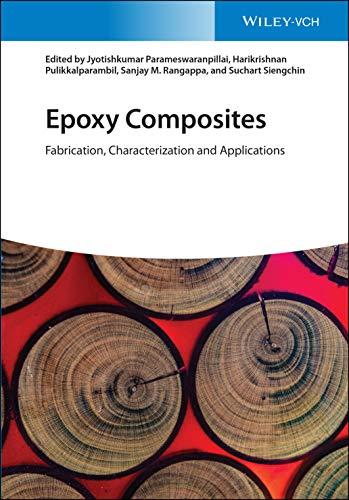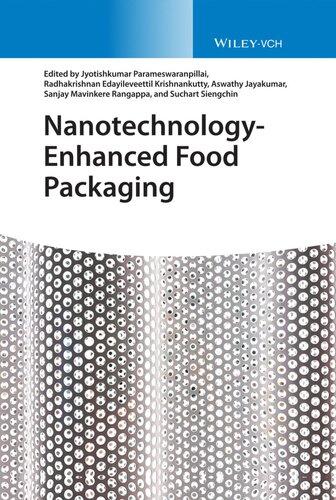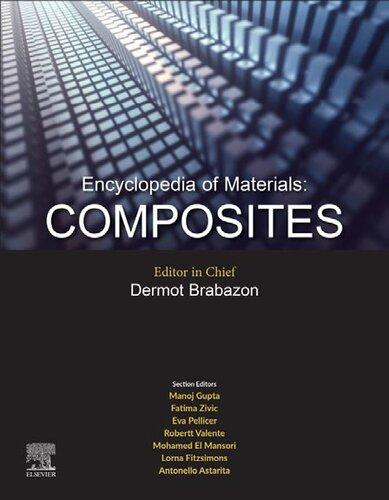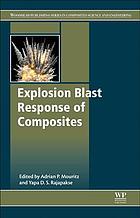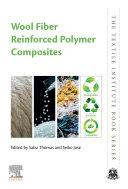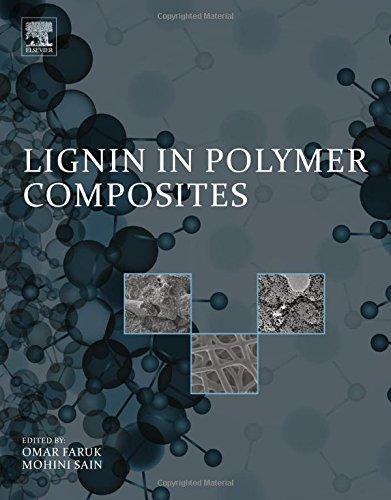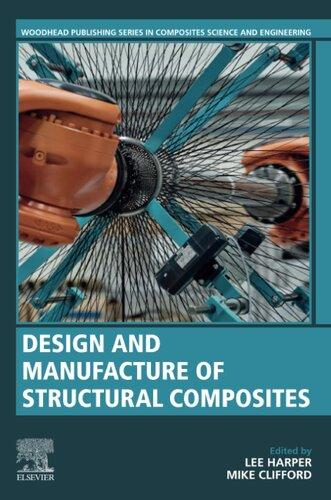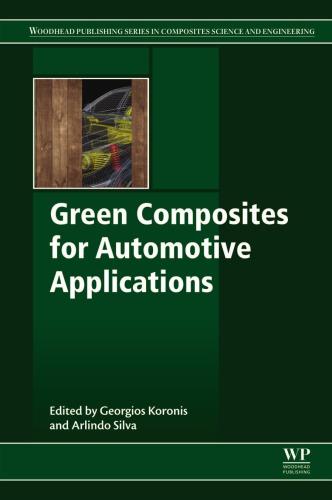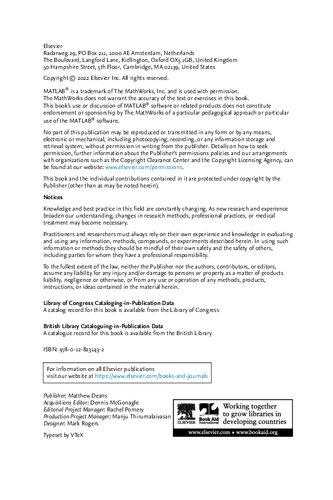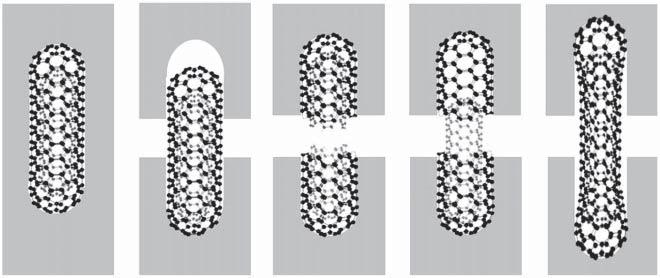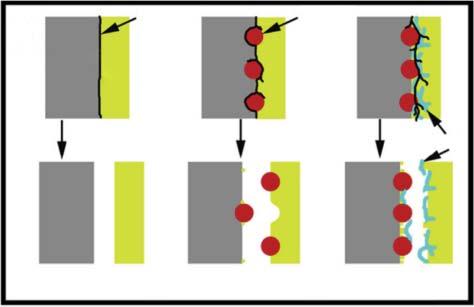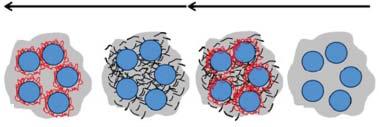EpoxyComposites
Fabrication,CharacterizationandApplications
Editedby
JyotishkumarParameswaranpillai
HarikrishnanPulikkalparambil
SanjayM.Rangappa SuchartSiengchin
Editors
Dr.JyotishkumarParameswaranpillai
KingMongkut’sUniversityof TechnologyNorthBangkok(KMUTNB) DepartmentofMaterialsandProduction Engineering
1518Pracharaj1
WongsawangRoad,Bangsue 10800Bangkok Thailand
Mr.HarikrishnanPulikkalparambil
KingMongkut’sUniversityof TechnologyNorthBangkok(KMUTNB) DepartmentofMaterialsandProduction Engineering 1518Pracharaj1
WongsawangRoad,Bangsue 10800Bangkok Thailand
Dr.SanjayM.Rangappa
KingMongkut’sUniversityof TechnologyNorthBangkok DepartmentofMaterialsandProduction Engineering 1518Pracharaj1
WongsawangRoad,Bangsue 10800Bangkok Thailand
Prof.SuchartSiengchin
KingMongkut’sUniversityof TechnologyNorthBangkok DepartmentofMaterialsandProduction Engineering 1518Pracharaj1
WongsawangRoad,Bangsue 10800Bangkok Thailand
CoverImage: ©IgorKrutov/AlamyStock
Allbookspublishedby Wiley-VCH arecarefullyproduced.Nevertheless, authors,editors,andpublisherdonot warranttheinformationcontainedin thesebooks,includingthisbook,to befreeoferrors.Readersareadvised tokeepinmindthatstatements,data, illustrations,proceduraldetailsorother itemsmayinadvertentlybeinaccurate. LibraryofCongressCardNo.: appliedfor
BritishLibraryCataloguing-in-Publication Data
Acataloguerecordforthisbookis availablefromtheBritishLibrary.
Bibliographicinformationpublishedby theDeutscheNationalbibliothek TheDeutscheNationalbibliotheklists thispublicationintheDeutsche Nationalbibliografie;detailed bibliographicdataareavailableonthe Internetat <http://dnb.d-nb.de>
©2021WILEY-VCHGmbH,Boschstr. 12,69469Weinheim,Germany
Allrightsreserved(includingthoseof translationintootherlanguages).No partofthisbookmaybereproducedin anyform–byphotoprinting, microfilm,oranyothermeans–nor transmittedortranslatedintoa machinelanguagewithoutwritten permissionfromthepublishers. Registerednames,trademarks,etc. usedinthisbook,evenwhennot specificallymarkedassuch,arenotto beconsideredunprotectedbylaw.
PrintISBN: 978-3-527-34678-3
ePDFISBN: 978-3-527-82406-9
ePubISBN: 978-3-527-82407-6
oBookISBN: 978-3-527-82408-3
Typesetting SPiGlobal,Chennai,India
Printedonacid-freepaper 10987654321
Contents
1IntroductiontoEpoxyComposites 1 HarikrishnanPulikkalparambil,SanjayMavinkereRangappa,Suchart Siengchin,andJyotishkumarParameswaranpillai
1.1Introduction 1
1.2ManufacturingMethodsforFabricationofEpoxyComposites 2
1.3ExperimentalTechniquesfortheCharacterizationofEpoxy Composites 3
1.4PropertiesofEpoxyComposites 6
1.4.1MechanicalProperties 6
1.4.2DielectricProperties 9
1.4.3Water/MoistureAbsorption 9
1.4.4Morphology 11
1.5Conclusion 13 References 13
2SynthesisandManufacturingofEpoxyComposites 23 TurupP.MohanandK.Kanny
2.1Introduction 23
2.2HistoryofEpoxyResin 23
2.3TypesofEpoxyResins 24
2.3.1Bisphenol-AEpoxyResin 24
2.3.2Bisphenol-FEpoxyResin 24
2.3.3PhenolNovolacEpoxyResin 25
2.3.4CycloaliphaticEpoxyResin 26
2.3.5EpoxyResinDiluents 26
2.3.6GlycidylamineEpoxyResin 27
2.4Curing 27
2.4.1CuringAgents 27
2.4.1.1PolyadditionReactions(ActiveHydrogenCompounds) 28
2.4.1.2PolyamideandPolyamine 28
2.4.1.3SecondaryandTertiaryAmines 30
2.4.2AnionicandCationicInitiators 31
2.4.2.1Imidazole(AnionicPolymerizing) 31
2.4.2.2Polymercaptan 31
2.4.2.3Anhydrides 32
2.4.2.4Canhydrides 32
2.4.2.5AlicyclicAnhydrides 32
2.4.2.6AliphaticAnhydrides 32
2.4.3LatentCuringAgents 32
2.4.3.1Light-CuringandUltraviolet-CuringAgents 33
2.4.3.2BoronTrifluoride–AmineComplex 33
2.4.3.3Dicyandiamide 33
2.4.3.4Organic-AcidHydrazide 33
2.4.4CuringConditions 34
2.4.4.1Bisphenol-AEpoxyResin 34
2.4.4.2Bisphenol-FEpoxyResin 34
2.4.4.3PhenolNovolacEpoxyResin 34
2.4.4.4CycloaliphaticEpoxyResin 34
2.4.4.5GlycidylamineEpoxyResin 34
2.5ReactionMechanisms 34
2.5.1Bisphenol-AEpoxyResin 34
2.5.2Bisphenol-FEpoxyResin 35
2.5.3PhenolNovolacEpoxyResin 35
2.5.4CycloaliphaticEpoxyResin 35
2.5.5EpoxyResinDiluents 36
2.6SafetyandEnvironmentalFactorsofEpoxyResins 36
2.6.1Bisphenol-AEpoxyResin,Bisphenol-FEpoxyResin,Glycidylamine EpoxyResin,EpoxyResinDiluents 36
2.6.1.1HealthRisks 36
2.6.1.2EnvironmentalIssues 36
2.6.2PhenolNovolacEpoxyResin 36
2.6.2.1HealthRisks 36
2.6.2.2EnvironmentalIssues 36
2.6.3CycloaliphaticEpoxyResin 37
2.6.3.1HealthRisks 37
2.6.3.2EnvironmentalIssues 37
2.7ManufacturingofEpoxyComposites 37
2.7.1OpenMolding 37
2.7.1.1HandLay-Up 38
2.7.1.2Spray-Up 39
2.7.1.3FilamentWinding 40
2.7.2ClosedMolding 41
2.7.2.1ReinforcedReactionInjectionMolding(RRIM) 41
2.7.2.2Vacuum-AssistedResinTransferMoldingProcess(VARTM) 43
2.7.2.3LightResinTransferMolding(LRTM) 44
2.7.2.4VacuumInfusionProcess(VIP) 45
2.7.2.5PultrusionProcess 46
2.7.2.6VacuumBagMolding(WetBagging) 47
2.7.2.7CentrifugalCasting 48
2.7.3NaturalFiberReinforcedEpoxyComposites 49
2.7.3.1ManufacturingofNaturalFiberReinforcedEpoxyComposites 49
2.8PreparingofParticulateFilledEpoxyComposites 51
2.8.1ParticleReinforcedEpoxyComposites 51
2.8.2Nanoparticle-FilledEpoxyComposite 51
2.8.2.1Method1 52
2.8.2.2Method2 52
2.9FuturisticProcessingofEpoxy-BasedComposites 52
2.9.1FastCuringPowderAdhesiveEpoxyResin 52
2.9.23DPrinting 53
2.9.3AdhesiveMethod 53
2.9.4UltrasonicFabricationMethodforEpoxyResin/SbSINanowire Composites 54
2.9.5Electron-Beam(E-Beam)Curing 54
2.9.6AutomatedFiberPlacement(AFP)EpoxyResinComposite 54
2.10Conclusion 54 References 55
3Micro-andNanoscaleStructureFormationinEpoxy-Clay Nanocomposites 61
SenoJose,V.K.Smitha,SanjayM.Rangappa,SenthilkumarKrishnasamy, DebabrataNandi,SuchartSiengchin,andJyotishkumarParameswaranpillai
3.1Introduction 61
3.2MicroandNanoscaleStructuresofPolymer/ClayNanocomposites 62
3.3EvolutionofEpoxy-ClayNanocompositeStructure 65
3.4MechanismofNanocompositeFormation 67
3.5ConclusionandFutureOutlook 72 References 73
4LongFiber-ReinforcedEpoxyComposites 83 AyeshaKausar
4.1Introduction 83
4.2LongFiberFillers 84
4.3LongFiber-ReinforcedEpoxyComposite 84
4.3.1EpoxyandLongGlassFiberComposite 84
4.3.2EpoxyandLongCarbonFiberComposite 87
4.3.3EpoxyandNaturalFiberComposite 90
4.4Applications,FutureProspective,andSummary 90 References 92
5Eco-FriendlyEpoxy-BasedComposites 97 VivekMishraandAlokAgrawal
5.1Introduction 97
5.2PhysicalBehaviorofNaturalFiber/Filler-ReinforcedEpoxy Composites 100
5.3MechanicalPropertiesoftheEpoxy-BasedComposites 103
5.3.1TensileProperties 104
5.3.2ImpactProperties 106
5.4ThermalBehaviorofNaturalFiber/Filler-ReinforcedEpoxy Composites 108
5.5WearBehaviorofNaturalFiber/Filler-ReinforcedEpoxy Composites 115
5.5.1ErosiveWear 115
5.5.2AdhesiveWear 115
5.5.3AbrasiveWear 116
5.6BioepoxyComposites 118
5.7Conclusion 119 References 119
6ProcessingofEpoxyCompositesBasedonCarbon Nanomaterials 125
LourdesRamos-Galicia,JuventinoLópez-Barroso,JulioAlejandro Rodríguez-González,CarlosVelasco-Santos,CarlosRubio-González, andAnaLauraMartínez-Hernández
6.1Introduction 125
6.2EpoxyNanocompositesReinforcedwith1Dand2DCarbonMaterials, MechanicalandThermomechanicalPerformance 126
6.3TracingofCureReaction 136
6.3.11DCarbonNanostructuresInfluenceovertheEpoxyCureReaction 137
6.3.2Influenceof2DCarbonNanostructuresOvertheCureReaction 139
6.3.33DHybridCarbonNanostructuresoverCureReactionofEpoxy Nanocomposites 143
6.4ImprovedMechanicalPropertiesofCarbonFiberReinforcedPolymers (Epoxy)throughtheIncorporationofCarbonNanostructures 146
6.4.1CFRPs(BasedEpoxy)ModifiedwithCarbonNanotubes 147
6.4.2CFRPs(BasedEpoxy)ModifiedwithGraphene-BasedMaterials 154
6.4.3CFRPs(BasedEpoxy)ModifiedwithHybrids(CarbonNanotubesand Graphene) 158
6.5ConcludingRemarks 160 References 161
7ThermalStabilityandFlameRetardancyofEpoxy Composites 177
MohamedismailFathimaRigana,TharakanSimiAnne,SadhasivamBalaji, ShanmugamChandrasekar,andMuthusamySarojadevi
7.1Introduction 177
7.2EffectsofMicroFillersonThermalPropertiesofEpoxyResin 178
7.2.1Epoxy/GlassFiberComposites 178
7.2.1.1Bis(4-cyanato-3,5-dimethylphenyl)NaphthylMethane/Epoxy/Glass FiberComposites 178
7.2.1.2Epoxy(DGEBA)Resin + CSE(ChlorinatedSoyOil)–BasedEpoxy/Glass FiberComposites 179
7.2.1.3Novolac-TypeEpoxyandIsocyanate-ModifiedEpoxy/GlassFiber Composites 182
7.2.2Epoxy/NaturalFiberComposites 182
7.2.2.1Epoxy(DER331)/KenafFiberComposites 182
7.2.2.2Epoxy(Ampreg26)/Phormiumtenax Composites 185
7.2.3Epoxy/NaturalFiberHybridComposites 186
7.2.3.1Epoxy(AralditeM)/Jute–GlassFiberHybridComposites 186
7.2.3.2Epoxy/FlaxandSisal–GlassFiberComposites 186
7.2.3.3Epoxy(DER331)/MH(MagnesiumHydroxide)-KenafFiber Composites 187
7.3EffectofNanofillersonThermalPropertiesofEpoxyResin 188
7.3.1Epoxy/ClayNanocomposites 188
7.3.1.1Epoxy(DGEBA)/ClayNanocomposites 188
7.3.1.2Epoxy(E51)/D-clay(Na+ -MMT)Nanocomposites 189
7.3.1.3Epoxy(DGEBA)/CloisiteNa+,Cloisite10A,Cloisite15,Cloisite93A Nanocomposites 190
7.3.1.4OrganoPhosphorusEpoxy/ClayNanocomposite 190
7.3.1.5Epoxy(DGEBA)/DNA-ModifiedMMTClayNanocomposites 191
7.3.2Epoxy/CNFNanocomposites 192
7.3.2.1Epoxy(SC-15)/CarbonNanoFiber(PR-24)Nanocomposites 192
7.3.3Epoxy/CNTNanocomposites 194
7.3.3.1CNT/EpoxyNanocomposites 194
7.3.4Epoxy/CelluloseNanofiberNanocomposites 196
7.3.4.1Epoxy(D.E.R.331)/CelluloseNanofiberNanocomposites 196
7.3.5Epoxy/SphericalMetalOxideNanocomposites 196
7.3.5.1Epoxy(Epon862)/CoreshellFe@FeONanocomposites 196
7.3.5.2Epoxy(Epon862)/Polyaniline-StabilizedSilicaNanoComposites 199
7.3.6EpoxyBasedHybridNanocomposites 201
7.3.6.1Epoxy(DGEBA)/CNT/OMPOSS/APPHybridNanocomposite 201
7.3.6.2Acrylonitrile–Butadiene–Styrene/BrominatedEpoxy–Antimony Oxide/OrganoMontmorillonite(ABS/BER-AO/OMT) Nanocomposites 202
7.3.6.3Epoxy/Ag@Cu–Ag@rGONanocomposite-BasedConductive Adhesives 203
7.3.6.4Epoxy/HM-SiO2 @CeO2 /NiONanocomposites 203
7.3.6.5Epoxy(Araldite)/Microsilica/NanoaluminaNanocomposites 204
7.4Epoxy-BasedHybridMicroandNanocomposites 204
7.4.1Epoxy(LY556)–Closite25AOMMT/GlassfiberMicroNano Composite 204
7.4.2Epoxy/GlassFiber(GE)Composites,Epoxy/GlassFiber/FGO Nanocomposites 205
x Contents
7.4.3Epoxy/GlassFiber(GE)CompositesandEpoxy/Glassfiber/NanoAl2 O3 Nanocomposites 205
7.4.4Epoxy/CF/DWCNT-NH2 Micro-Nanocomposites 206
7.4.5Epoxy/CarbonFiberComposites,Epoxy/CarbonNanotube Membrane/CarbonNanofiber(CNF)PaperMicro-Nanocomposites 207
7.5Conclusions 211
Acknowledgments 212 References 212
8SpectroscopyandX-rayScatteringStudiesofEpoxy Composites 217 P.PoornimaVijayan
8.1Introduction 217
8.2InsituCureMonitoring 218
8.3CharacterizationofInterfaceinFiber-ReinforcedEpoxy Composites 225
8.4DeterminationofResidualStressDevelopedDuringCure 228
8.5StressTransmissionStudiesinParticulateFilledEpoxyComposite 231
8.6WaterDiffusionStudies 232
8.7MorphologicalAnalysisinEpoxyComposites 233
8.8Conclusion 236 References 236
9WaterAbsorptionStudiesinEpoxyNanocomposites 241 BejoyFrancis
9.1Introduction 241
9.2FactorsAffectingWaterAbsorption 242
9.3EffectofWaterAbsorptiononMechanicalProperties 247
9.4EffectofWaterAbsorptiononDynamicMechanicalProperties 251
9.5EffectofWaterAbsorptiononThermomechanicalProperties 253
9.6EffectofWaterAbsorptiononDielectricProperties 254
9.7Conclusion 255 References 255
10FractureSurfaceandMechanicalPropertiesofEpoxy Composites 259 MehdiNaderiandFarnazEbrahimi
10.1Introduction 259
10.2Morphology 266
10.2.1DispersionandInterfacialAdhesion 266
10.2.2FractureSurfaceMorphology 273
10.3MechanicalProperties 278
10.3.1Stress–StrainBehavior 278
10.3.2FractureToughness 281
10.3.3ImpactProperties 282
10.3.4DynamicMechanicalProperties 284
10.3.5LapShearProperties 288
10.4ConclusionsandOutlooks 290 References 292
11DielectricandConductivityStudiesofEpoxyComposites 299
AnastasiosC.PatsidisandGeorgiosC.Psarras
11.1Introduction 299
11.2ExperimentalTechniquesandDataInterpretation 300
11.2.1ExperimentalTechniques 300
11.2.2DielectricandConductivityDataInterpretation 300
11.3ElectricalPropertiesofEpoxyResins 302
11.4Epoxy/NonconductiveReinforcingPhaseComposites 306
11.4.1Epoxy/NonconductiveFillerMicro-composites 306
11.4.2Epoxy/NonconductiveFillerNanocomposites 312
11.5Epoxy/ConductiveReinforcingPhaseComposites 317
11.5.1Epoxy/ConductiveFillerMicro-composites 317
11.5.2Epoxy/ConductiveFillerNanocomposites 325
11.6Epoxy-BasedHybridComposites–TargetingMultifunctionality 332
11.7ConclusionsandFutureTrends 343 References 343
12SmartEpoxyComposites 349
RezaEslami-FarsaniandHosseinEbrahimnezhad-Khaljiri
12.1Introduction 349
12.2ShapeMemoryEpoxyPolymersandtheirComposites 350
12.2.1TheCreationofShapeMemoryBehaviorintoEpoxy 350
12.2.2ShapeMemoryBehaviorinEpoxy-BasedNanocomposites 354
12.2.3ShapeMemoryBehaviorinEpoxy-BasedCompositeStructures 358
12.2.4ShapeMemoryWiresintheEpoxyComposites 360
12.3SmartEpoxyCompositeCoating 360
12.3.1Carbon-BasedNanomaterials–EpoxyCoating 364
12.3.2Clay-BasedNanomaterials–EpoxyCoating 365
12.3.3Silica-BasedNanomaterials–EpoxyCoating 366
12.3.4LayeredDoubleHydroxide-BasedNanomaterials–EpoxyCoating 367
12.3.5OtherNanoparticles–EpoxyCoating 367
12.3.6PolymerMicro-/Nanocontainer–EpoxyCoating 368
12.4Self-HealingEpoxyPolymersandtheirComposites 371
12.4.1Self-HealingBehavior 371
12.4.2IntrinsicHealingSystem 372
12.4.3VascularHealingSystem 375
12.4.4MicrocapsuleHealingSystem 377
12.5FutureTrends 380
12.6Conclusion 380
References 381
xii Contents
13ProjectsUsingCompositeEpoxyMaterials:Applications, RecyclingMethods,EnvironmentalIssues,Safety,andFuture Directions 395 AlencarBravoandDarliVieira
13.1IntroductionandContextofECMProjects 395
13.2DifferentApplicationsforECMs 397
13.3SafetyandEnvironmentalIssuesofECMProjects 400
13.4RecyclingOptionsforECMsandPollutionMitigationby EarlyDesign 405
13.5TheFutureforECMProjectsandConclusions 410 References 412
Index 421
1.4PropertiesofEpoxyComposites
1.4.1MechanicalProperties
Themechanicalpropertiesofepoxycompositesareanimportanttopicinshapingits efficientuseinanyapplicationarea.Thefactorsthataffectthemechanicalproperties
Table1.2 CharacteristicbandsofDGEBA.
Band(cm 1 )FTIRpeakassignment
≈3500O–Hstretching
3057C–Hstretchingvibrationsoftheoxiranering 2965–2873C–Hstretchingvibrationsinepoxyresin
1608C=Cstretchingvibrationsofaromaticrings
1509C–Cstretchingvibrationsofaromaticrings
1036C–O–Cstretchingvibrationsofethers
915C–Ostretchingvibrationsofoxiranegroup 831C–O–Cstretchingvibrationsofoxiranegroup 772CH2 rocking
Source:MaríaGonzálezetal.[73].IntechOpen.CCBY3.0.
offiller-reinforcedepoxycompositesarevolumefractionoffiller,filleraspectratio, fillerorientation,andfiller–matrixinterfacialadhesion[74].Themechanicalpropertiesofnaturalfibercompositescanbeimprovedwhenitisusedalongwithsynthetic fibers[75].Inotherwords,thehybridizationofnaturalfiberandsyntheticfiber leadstoimprovedmechanicalpropertiesduetothesynergeticeffectsofboththe fibers.Fioreetal.[76]studiedtheeffectofalkali(NaOH)treatmentonkenaffibers. Theyreportedthatthealkalitreatmentresultedinimprovedmechanicalstrengthby reducingthepolymerchainmobilityandenhancingthestresstransfer.However,the immersiontimeinNaOHhadanunfavorableeffectonthemechanicalproperties. Theparticlesizeoffillersmayalsoaffectthemechanicalproperties.Forexample, Wangetal.[77]showedtheeffectofparticlesizeofgraphenenanoplateletsonthe mechanicalpropertiesofepoxycomposites.Moderateincreaseinstrengthandmodulusisobservedwhensmallerparticlesareused.Ontheotherhand,largerparticles improvethemodulusremarkablybutreducethestrength.Thisisduetothereinforcementeffectoflargerparticles,buttheyhavepoorinterfacialinteractionwith theepoxymatrix.Inaninterestingwork,Gojnyetal.[24]schematicallydescribed severalmechanismsduringthefailureofCNT-modifiedepoxymatrixasshownin Figure1.1.ThedifferentfailuresoccurringontheCNTsduringtheapplicationof tensileforcearepullout,breakage,pulloutofinnertube,andbridgingorpartial debondingattheinterfaces.
Theimpactstrength/resistanceofacompositeistheenergyneededtobreakany material.Inotherwords,theimpactstrengthofamaterialisitsabilitytoresistthe appliedstressathighspeed.Manyfactorssuchasvoids,sharpedgesoffillers,filler agglomeration,andweakfiller–epoxyinterfacemayleadtostressconcentratedareas thatmaycausefailuresintheformofcracksbytheapplicationofappliedstress [78,79].Onewaytoimprovetheimpactstrengthisbytheadditionofdispersantsor couplingagents[80].Theadditionofdispersantsreducesfilleragglomerationthat couldotherwiseactasastressconcentrationpoint.DevendraandRangaswamy[81]
(a)(b)(c)(d)(e)
Figure1.1 Schematicrepresentationoffailuretypesinepoxy/CNTcomposites:(a) undamagedCNT,(b)CNTpullout,(c)CNTbreakage(verygoodCNT–epoxyinteraction),(d) telescopicpulloutdamagingoutertubeandpulloutdamaginginnertube,and(e)bridging andpartialdebondingatinterface.Source:Gojnyetal.[24].©2005,Elsevier.
reportedthatthefillercontenthigherthanoptimumhasanadverseeffectonthe impactresistanceofacompositeduetoagglomerationoffillers.
Theinterfacialshearstress(IFSS)measuresthedegreeofinterfacialstrength betweenthefillerandtheepoxymatrix.Wangetal.[82]studiedIFSSmeasurementsofAgnanoparticlesandgrapheneoxide(GO)-depositedCF-reinforcedepoxy composites.TheauthorsreportedthattheIFSSimprovedfrom46.8to87.1MPafor theepoxycomposites.ThepresenceofAgnanoparticleswasobservedtoincrease thesurfaceroughnessofthefiberandthematrix,whichprovidesbetterinterlocking betweenthefiberandthematrix.WhiletheincorporationofGOgreatlyimproves thewettabilityandinterfacialadhesionbetweentheCFandpolymermatrixthat leadstoimprovedshearstrength(Figure1.2).Godaraetal.[83]studiedtheeffectof CNTsontheIFSSofglassfiber-reinforcedepoxycomposites.Itwasobservedthat CNTsimprovetheIFSSirrespectiveofitslocationinthecomposites.However,as
Figure1.2 SchemeshowingfailuremodeofuntreatedCF-modifiedepoxy,CF/Ag-modified epoxy,andCF/Ag/GO-modifiedepoxy.Source:Wangetal.[82].©2017,Elsevier.
Figure1.3 Schematicrepresentation ofCNTsondifferentlocationsinthe compositeanditseffectonIFSS.
Source:Godaraetal.[83].©2010, Elsevier.
showninFigure1.3,themaximumimprovementofIFSSisobservedforcomposites withCNTsonthesurfaceoftheglassfiber.
1.4.2DielectricProperties
Thedielectricconstantandthedissipationfactorarethetwoimportantparameters inmeasuringthedielectricproperties[84].Thedielectricconstantmeasuresthe abilityofthematerialtostorecharge,whilethedissipationfactoristheenergydissipatedbyadielectric.Thesearemeasuredasafunctionoffrequencyofalternating currentbyplacingthecompositematerialbetweentheplatesofacondenserand measuringtheimpedance[85,86].Thedielectricconstantofepoxyresinisvery low(<10)tobeusefulinpracticalapplications[87].Incorporatinganadequate amountoffillersmayimprovethedielectricpropertiestosomeextent.However, higherloadingmayaffectthemechanicalpropertiesofthecomposite[88–90].Inan interestingwork,SinghaandThomas[91]studiedthedielectricpropertiesofinorganicfiller(TiO2 ,ZnO,andAI2 O3 )-incorporatedepoxycomposites.Itwasobserved thatthepermittivityandtandeltavaluesofthenanocompositeswerelowerthan thoseofthemicro-compositesandunfilledcomposites.Inanotherwork,Kuoetal. [92]preparedepoxycompositesusingself-synthesizedbariumtitanate(BaTiO3 ), commercialBaTiO3 ,andPb(Mg1/3 Nb2/3 )O3 ceramicparticles.Itwasobservedthat theself-synthesizedceramicparticleBaTiO3 exhibitsadielectricconstantof44 comparedto27and24forcommercialBaTiO3 andPb(Mg1/3 Nb2/3 )O3 composites. Thisisduetothelargeceramicaggregatesformedintheepoxycompositesby self-synthesizedBaTiO3 .Inanotherstudy,Wanetal.[93]reportedthedielectric propertiesofDGEBA–RGO/epoxycomposites,whereDGEBA–RGOwasprepared bygraftingDGEBAmoleculesonreducedgrapheneoxide(RGO)sheets.The DGEBA–RGO/epoxycompositesshowedanimproveddielectricconstantof ∼32. ThiswasattributedtobettercompatibilityarisingduetograftingofDGEBAandthe bettercontactofRGOsheetsmakingapathwayforsuppressingthedielectricloss effectively.Inoneoftheworks,Jlassietal.[94]reportedthataverysmallamount ofdiazonium-modifiedclay-polyanilinenanofiller(B-DPA/PANI)intheepoxy matrixcanimprovethetensilestrength(0.1wt%)anddielectricconstantwiththe incorporationaslowas0.5wt%.Thisisduetothegooddispersionofthenanofiller intheepoxymatrix.
1.4.3Water/MoistureAbsorption
Waterabsorptionofamaterialmaybedefinedasthepercentageofwateruptakein agivenunittimeataspecifictemperature.Itiscalculatedbymeasuringthechange
1IntroductiontoEpoxyComposites
inweightwithrespecttoitsoriginalweightafteragiventime.Theweightgainedat saturationisthefinalweight.
Wateruptake (%)= Initialweightofsample-Finalweightofsample Initialweightofsample × 100
Therateofwateruptakecanbemeasuredbycalculatingthediffusioncoefficientof thecomposites[95].Thefollowingequationcanbeusedtocalculatethecoefficient ofdiffusion:
Oneofthemainlimitationsofepoxyresinanditscompositesisitshighwater absorption.Thewateruptakemayadverselyaffectthe T g ,modulus,strength,and toughnessduetothedegradationoftheepoxythermoset[73].Italsogeneratesinternalstressesduetoswellingandcausesdelaminationofthefillerorotherdefects incomposites.Ingeneral,themainconcernwithnaturalfibercompositesistheir highmoistureintakeduetothepresenceofhydroxylgroupsinthefiber,which reducesthecompatibilitybetweenthefiberandtheepoxymatrix[96].Infact,the fiber–matrixinterfacialstrengthmaybereduced,whichinturnwilldecreasethe mechanicalperformancesofthecomposites.Infewstudies,itwasobservedthat thehybridizationoffibersinthecompositemayimprovethemechanicalandwater absorptionproperties[97–99].Forexample,Maslindaetal.[100]studiedtheeffect ofwaterabsorptiononthemechanicalpropertiesofwovenkenaf,jute,andhemp fiber-basedhybridepoxycomposites.Theauthorsreportedthatthemechanicaland water-resistantpropertiesofthecompositeswereimprovedwithhybridization.
Thewaterabsorptionisobservedtobehigherfornaturalfiber-reinforcedcompositeswhencomparedtosyntheticfiber-reinforcedcomposites[101,102].Therefore,thehybridizationofnaturalfiberandsyntheticfiberreducesthewateruptake tremendously.SanjayandYogesha[102]studiedthewaterabsorptionbehaviorof jute,kenaf,andE-glasswovenfiber-reinforcedepoxycompositeswithdifferentlayeringsequences.Theauthorsreportedareductioninwaterabsorptionbehaviorwith thehybridizationofnaturalandsyntheticfibers.Venkateshwaranetal.[103]studiedthewaterabsorptionrateofsisalandbananafibercomposites.Theyobserveda reductionintherateofwaterabsorptionafterhybridizingthesisalfiber(50%)with bananafiber.
Thewettingoffibersorfillersplaysanimportantroleinreducingthewater absorptionbecausewettingimprovestheadhesionofthefillerwithmatrix [104,105].Theadditionofasmallamountofnanoclay(c.3–5wt%)inepoxy compositesexhibitsimprovedbarrierproperties[106,107].Beckeretal.[108] studiedwaterabsorptioninnanoclay-filledtetrafunctionaltetraglycidyldiamino diphenylmethane(TGDDM)andDGEBAresinsystems.Itwasevidentfromthe resultsthatnanoclay-filledcompositesshowedlowerwaterabsorptionwhen comparedtoneatepoxyresin.However,therateofdiffusionwiththechangein nanoclayconcentrationisobservedtobeunaffected.Inaninterestingwork,Mohan andKanny[109]reportedthewaterbarrierpropertiesofsisalfiber-modifiedepoxy compositesandnanoclay-filledsisalfiber-reinforcedepoxycomposites.Afterwater
D =π( kh 4Mn )2
1.4PropertiesofEpoxyComposites 11 absorption,thetensileandwearpropertiesofsisalfibercompositesdetrimentally decreased.However,aftertheadditionofnanoclaytosisalfibercomposites,the tensileandwearpropertiesareleastaffected.Thisisduetothebarrierpropertyof nanoclaythatstopsthewaterfromenteringthecomposites.
1.4.4Morphology
Themorphologyofcompositesplaysanimportantroleinidentifyingthefailure mechanisms.Forexample,electronmicroscopeisusedtoanalyzetheexistence ofvoids,agglomeration,anddispersionoffillers[110,111].Inaninteresting study,Sabaetal.[111]preparedhybridepoxycompositescontainingkenafandoil palmemptyfruitbunchfiber(OPEFB)fillersthatshowedimprovedmechanical properties.Themorphologystudyrevealedthattheadditionof3%OPEFBfiller intoepoxy/kenafcompositeswasobservedtoimprovetheinterfacialbonding betweenthefiberandmatrix.Also,theadditionofOPEFBfiberreducesvoid contents,fiberpullout,andfiberprotrudingandtearingonthecomposites.Oksmanetal.[112]studiedthemorphologyofunidirectionalsisal/epoxycomposites. Figure1.4a,bshowsscanningelectronmicroscopy(SEM)imagesoffractured surfaceofsisal/epoxycomposites.Here,thefiberpulloutandimprintsarevisible. Figure1.4c,dshowstheopticalmicroscopyimagesofthecomposites.Thefigures showfiberdistributionandhorseshoe-shapedtechnicalfibers.Atomicforce microscopy(AFM)isalsoapowerfultooltocharacterizesurfacemorphologyand




Figure1.4 (aandb)SEMimageofsisal/epoxyfracturesurfaceshowsfiberpulloutsand imprintofthefiberonepoxysurface,(candd)opticalmicroscopyofsisal/epoxycomposites showshorseshoestructureandvoidsinthefiber–epoxyinterface.Source:Oksmanetal. [112],ReproducedwithpermissionfromWiley,LicenseNumber:4847180686936.
(a)
(b)(d)
(c)
Figure1.5 AFMimageshowingdebondingoccurredduringhygroscopictreatmentsof carbonfiber-reinforcedcomposite.Source:WangandHahn[114],Reproducedwith permissionfromElsevier,LicenseNumber:4847180982493.
thicknessofnanosizedfillersinepoxycomposites.GeorgeandVerpoest[113] characterizedtheuntreatedandsilane-treatedfiberusingAFMandobservedthat thesurfaceofthetreatedfibersisrougherthanthatoftheuntreatedfibers.In anotherwork,WangandHahn[114]studiedtheeffectofhygrothermalprocesses ontheinterfacialpropertiesofCF-reinforcedepoxycomposites.TheAFMwas usedtoinvestigatethedebondingoffibers.Figure1.5showstheAFMimageof debondinginhygroscopictreatedcompositesatdifferenttimeintervals.
1.5Conclusion
Inthischapter,anoverviewofthemanufacturing,characterization,andproperties oftheepoxycompositesisbrieflydiscussed.Itisworthtopointoutthattheapplicationsofepoxycompositesarewidelyacceptedinallareasofmanufacturingindustriessuchasautomotive,aerospace,construction,oilandgas,andmarineowingto theirexcellentheatandsolventresistance,highthermomechanicalproperties,high specificstrength,goodadhesiveness,lightweight,andlowcost.Epoxycomposites alsofindapplicationsinprintedcircuitboards(PCBs),electromagneticshielding (EMI),supercapacitors,etc.Thehighperformanceofthecompositesisgenerally achievedbytheincorporationoffibers,organicfillers,andinorganicfillers.Furthermore,theadditionofthermoplasticcopolymersmayphaseseparateintodifferent phasemorphologieswhichmaytailortheperformanceoftheepoxycomposites.
References
1 Basheer,B.V.,George,J.J.,Siengchin,S.,andParameswaranpillai,J.(2020). Polymergraftedcarbonnanotubes–synthesis,properties,andapplications:a review. Nano-Structures&Nano-Objects 22:100429.
2 Masuelli,M.A.(2013).Introductionoffibre-reinforcedpolymers–polymers andcomposites:concepts,propertiesandprocesses.In: FiberReinforcedPolymers–TheTechnologyAppliedforConcreteRepair .Rijeka,Croatia:IntechOpen.
3 Campbell,F.C.(2010).Introductiontocompositematerials. StructuralCompositeMaterials 1:1–29.
4 Cantwell,W.J.andMorton,J.(1991).Theimpactresistanceofcompositematerials–areview. Composites 22(5):347–362.
5 Rahman,R.andPutra,S.Z.(2019).Tensilepropertiesofnaturalandsynthetic fiber-reinforcedpolymercomposites.In: MechanicalandPhysicalTestingof Biocomposites,Fibre-ReinforcedCompositesandHybridComposites,81–102. WoodheadPublishing,Cambridge,UK.
6 Jin,F.L.,Li,X.,andPark,S.J.(2015).Synthesisandapplicationofepoxyresins: areview. JournalofIndustrialandEngineeringChemistry 29:1–1.
7 Gu,H.,Ma,C.,Gu,J.etal.(2016).Anoverviewofmultifunctionalepoxy nanocomposites. JournalofMaterialsChemistryC 4(25):5890–5906.
8 Stenko,M.S.andChawalwala,A.J.(2001).Thinpolysulfideepoxybridgedeck overlays. TransportationRresearchRrecord 1749(1):64–67.
9 Vijayan,P.P.,Puglia,D.,Jyotishkumar,P.etal.(2012).Effectofnanoclayand carboxyl-terminated(butadiene-co-acrylonitrile)(CTBN)rubberonthereactioninducedphaseseparationandcurekineticsofanepoxy/cyclicanhydride system. JournalofMaterialsScience 47(13):5241–5253.
10 Kausar,A.(2017).Polyurethane/epoxyinterpenetratingpolymernetwork.In: AspectsofPolyurethanes,27.Rijeka,Croatia:IntechOpen.
1IntroductiontoEpoxyComposites
11 Hodd,K.(1989).Epoxyresins.In: ComprehensivePolymerScienceandSupplements,vol.5(eds.V.PercecandC.Pugh),667–699.Oxford:Pergamon Press.
12 Abdellaoui,H.,Raji,M.,Bouhfid,R.,andelkacemQaiss,A.(2019Jan1). Investigationofthedeformationbehaviorofepoxy-basedcompositematerials. In: FailureAnalysisinBiocomposites,Fibre-ReinforcedCompositesandHybrid Composites,29–49.Cambridge,UK:WoodheadPublishing.
13 Paluvai,N.R.,Mohanty,S.,andNayak,S.K.(2014).Synthesisandmodifications ofepoxyresinsandtheircomposites:areview. Polymer-PlasticsTechnologyand Engineering 53(16):1723–1758.
14 Satyanarayana,K.G.,Sukumaran,K.,Mukherjee,P.S.etal.(1990).Natural fibre-polymercomposites. CementandConcreteComposites 12(2):117–136.
15 Satyanarayana,K.G.,Sukumaran,K.,Kulkarni,A.G.etal.(1986).Fabrication andpropertiesofnaturalfibre-reinforcedpolyestercomposites. Composites 17 (4):329–333.
16 Gowda,T.M.,Naidu,A.C.,andChhaya,R.(1999).Somemechanicalproperties ofuntreatedjutefabric-reinforcedpolyestercomposites. CompositesPartA: AppliedScienceandManufacturing 30(3):277–284.
17 Ashik,K.P.andSharma,R.S.(2015).Areviewonmechanicalpropertiesof naturalfiberreinforcedhybridpolymercomposites. JournalofMineralsand MaterialsCharacterizationandEngineering 3(05):420.
18 Vijay,R.,Singaravelu,D.L.,Vinod,A.etal.(2019).Characterizationofrawand alkalitreatednewnaturalcellulosicfibersfromTridaxprocumbens. InternationalJournalofBiologicalMacromolecules 125:99–108.
19 Yorseng,K.,Sanjay,M.R.,Tengsuthiwat,J.etal.(2019).InformationinUnited StatesPatentsonworksrelatedto‘NaturalFibers’:2000–2018.CurrentMaterialsScience:Formerly:RecentPatentson. MaterialsScience 12(1):4–76.
20 Sanjay,M.R.,Siengchin,S.,Parameswaranpillai,J.etal.(2019).Acomprehensivereviewoftechniquesfornaturalfibersasreinforcementincomposites: preparation,processingandcharacterization. CarbohydratePolymers 207: 108–121.
21 Khan,A.,Vijay,R.,Singaravelu,D.L.etal.(2020).Extractionandcharacterizationofvetivergrass(Chrysopogonzizanioides)andkenaffiber(Hibiscus cannabinus)asreinforcementmaterialsforepoxybasedcompositestructures. JournalofMaterialsResearchandTechnology 9(1):773–778.
22 Madhu,P.,Sanjay,M.R.,Senthamaraikannan,P.etal.(2019).YogeshaB.A reviewonsynthesisandcharacterizationofcommerciallyavailablenatural fibers:Part-I. JournalofNaturalFibers 16(8):1132–1144.
23 Abdellaoui,H.,Bouhfid,R.,andelKacemQaiss,A.(2016).Clay,naturalfibers andthermosetresinbasedhybridcomposites:preparation,characterizationand mechanicalproperties.In: Nanoclayreinforcedpolymercomposites,225–246. Singapore:Springer.
24 Gojny,F.H.,Wichmann,M.H.,Fiedler,B.,andSchulte,K.(2005).Influence ofdifferentcarbonnanotubesonthemechanicalpropertiesofepoxymatrix
References 15 composites–acomparativestudy. CompositesScienceandTechnology 65(15–16): 2300–2313.
25 Fiore,V.,Scalici,T.,DiBella,G.,andValenza,A.(2015).Areviewonbasalt fibreanditscomposites. CompositesPartB:Engineering 74:74–94.
26 Summerscales,J.,Virk,A.,andHall,W.(2013).Areviewofbastfibresand theircomposites:Part3–Modelling. CompositesPartA:AppliedScienceand Manufacturing 44:132–139.
27 Mishra,V.andBiswas,S.(2013).Physicalandmechanicalpropertiesof bi-directionaljutefiberepoxycomposites. ProcediaEngineering. 51:561–566.
28 Ramesh,M.,Atreya,T.S.,Aswin,U.S.etal.(2014).Processingandmechanical propertyevaluationofbananafiberreinforcedpolymercomposites. Procedia Engineering 97:563–572.
29 Harshe,R.(2015).Areviewonadvancedout-of-autoclavecompositesprocessing. JournaloftheIndianInstituteofScience 95(3):207–220.
30 Hsiao,K.T.andHeider,D.(2012Jan1).Vacuumassistedresintransfermolding(VARTM)inpolymermatrixcomposites.In: ManufacturingTechniques forPolymerMatrixComposites(PMCs),310–347.Cambridge,UK:Woodhead Publishing.
31 Schmachtenberg,E.,ZurHeide,J.S.,andTöpker,J.(2005).Applicationofultrasonicsfortheprocesscontrolofresintransfermoulding(RTM). PolymerTesting 24(3):330–338.
32 Ouarhim,W.,Zari,N.,Bouhfid,R.,andelkacemQaiss,A.(2019Jan1). Mechanicalperformanceofnaturalfibers–basedthermosettingcomposites.In: MechanicalandPhysicalTestingofBiocomposites,Fibre-ReinforcedComposites andHybridComposites,43–60.Cambridge,UK:WoodheadPublishing.
33 Kong,I.,Tshai,K.Y.,andHoque,M.E.(2015).Manufacturingofnatural fibre-reinforcedpolymercompositesbysolventcastingmethod.In: ManufacturingofnaturalFibreReinforcedPolymerComposites,331–349.Cham: Springer.
34 Eckold,G.C.(1994).Designandmanufactureofcompositestructures. WoodheadPublishingSeriesinCompositesScienceandEngineering:251–304.
35 deAndradeSilva,F.,Chawla,N.,anddeToledoFilho,R.D.(2008).Tensile behaviorofhighperformancenatural(sisal)fibers. CompositesScienceand Technology 68(15-16):3438–3443.
36 Rong,M.Z.,Zhang,M.Q.,Liu,Y.etal.(2001).Theeffectoffibertreatmenton themechanicalpropertiesofunidirectionalsisal-reinforcedepoxycomposites. CompositesScienceandTechnology 61(10):1437–1447.
37 Chachad,Y.R.,Roux,J.A.,Vaughan,J.G.,andArafat,E.(1995). Three-dimensionalcharacterizationofpultrudedfiberglass-epoxycomposite materials. JournalofReinforcedPlasticsandComposites 14(5):495–512.
38 Santos,L.S.,Biscaia,E.C.Jr.,,Pagano,R.L.,andCalado,V.M.(2012). CFD-optimizationalgorithmtooptimizetheenergytransportinpultruded polymercomposites. BrazilianJournalofChemicalEngineering 29(3):559–566.
1IntroductiontoEpoxyComposites
39 Belaadi,A.,Bezazi,A.,Maache,M.,andScarpa,F.(2014).Fatigueinsisalfiber reinforcedpolyestercomposites:hysteresisandenergydissipation. Procedia Engineering 74:325–328.
40 Shen,F.C.(1995).Afilament-woundstructuretechnologyoverview. Materials ChemistryandPhysics 42(2):96–100.
41 Cheng,X.andWiggins,J.S.(2017).Noveltechniquesforthepreparationof differentepoxy/thermoplasticblends.In: HandbookofEpoxyBlends (eds.J. Parameswaranpillai,N.Hameed,J.PionteckandE.Woo),459–486.Cham: Springer.
42 Fenouillot,F.andPerier-Camby,H.(2004).Formationofafibrillarmorphology ofcrosslinkedepoxyinapolystyrenecontinuousphasebyreactiveextrusion. PolymerEngineeringandScience 44(4):625–637.
43 Olowojoba,G.B.andFraunhofer,P.(2013). AssessmentofDispersionEvolutionofCarbonNanotubesinShear-mixedEpoxySuspensionsbyInterfacial PolarizationMeasurement.FraunhoferVerlag:Stuttgart,Germany.
44 Chang,L.,Friedrich,K.,Ye,L.,andToro,P.(2009).Evaluationandvisualizationofthepercolatingnetworksinmulti-wallcarbonnanotube/epoxy composites. JournalofMaterialsScience 44(15):4003–4012.
45 Gojny,F.H.,Wichmann,M.H.,Köpke,U.etal.(2004).Carbon nanotube-reinforcedepoxy-composites:enhancedstiffnessandfracturetoughnessatlownanotubecontent. CompositesScienceandTechnology 64(15): 2363–2371.
46 Rumeau,N.,Threlfall,D.,andWilmet,A.(2009). ResonantAcoustic® Mixing–ProcessingandFormulationChallengesforCostEffectiveManufacturing France,Saint-Médard-en-Jalles:ROXEL.
47 Parameswaranpillai,J.,George,A.,Pionteck,J.,andThomas,S.(2013).Investigationofcurereaction,rheology,volumeshrinkageandthermomechanical propertiesofnano-TiO2 filledepoxy/DDScomposites. JournalofPolymers 5: 2013.
48 Jyotishkumar,P.,Logakis,E.,George,S.M.etal.(2013).Preparationandpropertiesofmultiwalledcarbonnanotube/epoxy-aminecomposites. Journalof AppliedPolymerScience 127(4):3063–3073.
49 Hameed,N.,Dumée,L.F.,Allioux,F.M.etal.(2018).Graphenebasedroom temperatureflexiblenanocompositesfrompermanentlycross-linkednetworks. ScientificReports 8(1):1–8.
50 Yorseng,K.,Rangappa,S.M.,Pulikkalparambil,H.etal.(2020).Acceleratedweatheringstudiesofkenaf/sisalfiberfabricreinforcedfullybiobased hybridbioepoxycompositesforsemi-structuralapplications:morphology, thermo-mechanical,waterabsorptionbehaviorandsurfacehydrophobicity. ConstructionandBuildingMaterials 235:117464.
51 Ivanov,E.,Kotsilkova,R.,Krusteva,E.etal.(2011).Effectsofprocessingconditionsonrheological,thermal,andelectricalpropertiesofmultiwallcarbon nanotube/epoxyresincomposites. JournalofPolymerSciencePartB:Polymer Physics 49(6):431–442.
52 Song,Y.S.andYoun,J.R.(2005).Influenceofdispersionstatesofcarbon nanotubesonphysicalpropertiesofepoxynanocomposites. Carbon 43(7): 1378–1385.
53 Kim,J.A.,Seong,D.G.,Kang,T.J.,andYoun,J.R.(2006).Effectsofsurface modificationonrheologicalandmechanicalpropertiesofCNT/epoxycomposites. Carbon 44(10):1898–1905.
54 Park,S.J.,Bae,K.M.,andSeo,M.K.(2010).Astudyonrheologicalbehaviorof MWCNTs/epoxycomposites. JournalofIndustrialandEngineeringChemistry 16 (3):337–339.
55 Zhu,J.,Wei,S.,Yadav,A.,andGuo,Z.(2010).Rheologicalbehaviorsand electricalconductivityofepoxyresinnanocompositessuspendedwithin-situ stabilizedcarbonnanofibers. Polymer 51(12):2643–2651.
56 Ferry,J.D.(1980). ViscoelasticPropertiesofPolymers.NewYork:JohnWiley& Sons.
57 Matykiewicz,D.,Barczewski,M.,andSterzy ´ nski,T.(2015Oct1).Morphologyandthermomechanicalpropertiesofepoxycompositeshighlyfilledwith wastebulkmoldingcompounds(BMC). JournalofPolymerEngineering 35(8): 805–811.
58 Chateauminois,A.,Chabert,B.,Soulier,J.P.,andVincent,L.(1995Aug). Dynamicmechanicalanalysisofepoxycompositesplasticizedbywater:artifact andreality. PolymerComposites 16(4):288–296.
59 Xian,G.andKarbhari,V.M.(2007).DMTAbasedinvestigationofhygrothermal ageingofanepoxysystemusedinrehabilitation. JournalofAppliedPolymer Science 104(2):1084–1094.
60 Groenewoud,W.M.(2001).Differentialscanningcalorimetry.In: CharacterisationofPolymersbyThermalAnalysis,10–60.Amsterdam,Netherlands:Elsevier Science.
61 Xie,H.,Liu,B.,Sun,Q.etal.(2005).Curekineticstudyofcarbon nanofibers/epoxycompositesbyisothermalDSC. JournalofAppliedPolymer Science 96(2):329–335.
62 Ricky,H.,Jessop,J.L.P.,Peters,F.E.,andKessler,M.R.(2013).Curekinetics characterizationandmonitoringofanepoxyresinusingDSC,Ramanspectroscopy,andDEA. CompositesPartA:AppliedScienceandManufacturing 49: 100–108.
63 Gojny,F.H.andSchulte,K.(2004).Functionalisationeffectonthe thermo-mechanicalbehaviourofmulti-wallcarbonnanotube/epoxy-composites. CompositesScienceandTechnology 64(15):2303–2308.
64 Kang,S.,Hong,S.I.,Choe,C.R.etal.(2001).Preparationandcharacterization ofepoxycompositesfilledwithfunctionalizednanosilicaparticlesobtainedvia sol–gelprocess. Polymer 42(3):879–887.
65 Groenewoud,W.M.(2001).Thermogravimetry.In: CharacterisationofPolymers byThermalAnalysis,61–76.Amsterdam,Netherlands:Science.
66 Carrier,M.,Loppinet-Serani,A.,Denux,D.etal.(2011).Thermogravimetricanalysisasanewmethodtodeterminethelignocellulosiccompositionof biomass. BiomassandBioenergy 35:298–307.
1IntroductiontoEpoxyComposites
67 Lupoi,J.S.,Singh,S.,Parthasarathi,R.etal.(2015).Recentinnovationsin analyticalmethodsforthequalitativeandquantitativeassessmentoflignin. RenewableandSustainableEnergyReviews 49:871–906.
68 Yee,R.Y.andStephens,T.S.(1996).ATGAtechniquefordetermininggraphite fibercontentinepoxycomposites. ThermochimicaActa 272:191–199.
69 Zhang,Z.,Wang,C.,Huang,G.etal.(2018).Thermaldegradationbehaviors andreactionmechanismofcarbonfibre-epoxycompositefromhydrogentank byTG-FTIR. JournalofHazardousMaterials 357:73–80.
70 Chen,Z.,Zhu,Q.,Wang,X.etal.(2015).PyrolysisbehaviorsandkineticstudiesonEucalyptusresiduesusingthermogravimetricanalysis. EnergyConversion andManagement 105:251–259.
71 Gao,N.,Li,A.,Quan,C.etal.(2013).TG–FTIRandPy–GC/MSanalysison pyrolysisandcombustionofpinesawdust. JournalofAnalyticalandApplied Pyrolysis 100:26–32.
72 Zhao,S.,Zhu,L.,Gao,L.,andLi,D.(2018).Limitationsformicroplastic quantificationintheoceanandrecommendationsforimprovementandstandardization.In: Microplasticcontaminationinaquaticenvironments,27–49. Amsterdam:ElsevierInc.
73 González,G.M.,Cabanelas,J.C.,andBaselga,J.(2012).ApplicationsofFTIRon epoxyresins-identification,monitoringthecuringprocess,phaseseparationand wateruptake.In: InfraredSpectroscopy-MaterialsScience,EngineeringandTechnology,261–284.IntechOpen.
74 Kahraman,R.,Abbasi,S.,andAbu-Sharkh,B.(2005).Influenceofepolene G-3003asacouplingagentonthemechanicalbehaviorofpal-fiberpolypropylenecomposites. InternationalJournalofPolymericMaterials 54(6):483–503.
75 Sanjay,M.R.,Arpitha,G.R.,andYogesha,B.(2015).Studyonmechanicalpropertiesofnatural-glassfibrereinforcedpolymerhybridcomposites:areview. MaterialsToday:Proceedings 2(4–5):2959–2967.
76 Fiore,V.,DiBella,G.,andValenza,A.(2015).Theeffectofalkalinetreatmentonmechanicalpropertiesofkenaffibersandtheirepoxycomposites. CompositesPartB:Engineering 68:14–21.
77 Wang,F.,Drzal,L.T.,Qin,Y.,andHuang,Z.(2015).Mechanicalpropertiesand thermalconductivityofgraphenenanoplatelet/epoxycomposites. Journalof MaterialsScience 50(3):1082–1093.
78 DeArmitt,C.(2011Jan1).Functionalfillersforplastics.In: AppliedPlastics EngineeringHandbook,455–468.Waltham,USA:WilliamAndrewPublishing.
79 Jyotishkumar,P.,Pionteck,J.,Moldenaers,P.,andThomas,S.(2013).PreparationandpropertiesofTiO2 -filledpoly(acrylonitrile-butadiene-styrene)/epoxy hybridcomposites. JournalofAppliedPolymerScience 127(4):3159–3168.
80 DeArmitt,C.andRothon,R.(2017Jan1).Dispersantsandcouplingagents. In: AppliedPlasticsEngineeringHandbook,501–516.Waltham,USA:William AndrewPublishing.
81 Devendra,K.andRangaswamy,T.(2013).StrengthcharacterizationofE-glass fiberreinforcedepoxycompositeswithfillermaterials. JournalofMineralsand MaterialsCharacterizationandEngineering 1(6):353–357.
82 Wang,C.,Zhao,M.,Li,J.etal.(2017).Silvernanoparticles/grapheneoxide decoratedcarbonfibersynergisticreinforcementinepoxy-basedcomposites. Polymer 131:263–271.
83 Godara,A.,Gorbatikh,L.,Kalinka,G.etal.(2010).Interfacialshearstrength ofaglassfiber/epoxybondingincompositesmodifiedwithcarbonnanotubes. CompositesScienceandTechnology 70(9):1346–1352.
84 Qing-Hua,L.andZheng,F.(2018).Polyimidesforelectronicapplications.In: AdvancedPolyimideMaterials:Synthesis,CharacterizationandApplications (ed. S.Yang),195–255.Amsterdam:Elsevier.
85 Varshneya,A.K.andMauro,J.C.Dielectricproperties.In: Fundamentalsof InorganicGlasses,3e,vol.2019,425–442.Amsterdam:Elsevier.
86 Morton,W.E.andHearle,J.W.S.Dielectricproperties.In: PhysicalProperties ofTextileFibres,4e,vol.2008,625–642.Cambridge,UK:WoodheadPublishing SeriesinTextiles.
87 Zhang,L.B.,Wang,J.Q.,Wang,H.G.etal.(2012).Preparation,mechanical andthermalpropertiesoffunctionalizedgraphene/polyimidenanocomposites. CompositesPartA:AppliedScienceandManufacturing 43(9):1537–1545.
88 Wang,Z.,Zhou,W.,Sui,X.etal.(2018).DielectricstudiesofAlnanoparticle reinforcedepoxyresincomposites. PolymerComposites 39(3):887–894.
89 Shang,J.,Zhang,Y.,Yu,L.etal.(2013).Fabricationandenhanceddielectric propertiesofgraphene–polyvinylidenefluoridefunctionalhybridfilmswitha polyanilineinterlayer. JournalofMaterialsChemistryA 1(3):884–890.
90 Xie,P.,Li,Y.,andQiu,J.(2014).Preparationanddielectricbehaviorof polyvinylidenefluoridecompositefilledwithmodifiedgraphitenanoplatelet. JournalofAppliedPolymerScience 131(24):40229.
91 Singha,S.andThomas,M.J.(2008).Dielectricpropertiesofepoxynanocomposites. IEEETransactionsonDielectricsandElectricalInsulation 15(1):12–23.
92 Kuo,D.H.,Chang,C.C.,Su,T.Y.etal.(2004).Dielectricpropertiesofthree ceramic/epoxycomposites. MaterialsChemistryandPhysics 85(1):201–206.
93 Wan,Y.J.,Yang,W.H.,Yu,S.H.etal.(2016).Covalentpolymerfunctionalization ofgrapheneforimproveddielectricpropertiesandthermalstabilityofepoxy composites. CompositesScienceandTechnology 122:27–35.
94 Jlassi,K.,Chandran,S.,Poothanari,M.A.etal.(2016).Clay/polyanilinehybrid throughdiazoniumchemistry:conductivenanofillerwithunusualeffectson interfacialpropertiesofepoxynanocomposites. Langmuir 32(14):3514–3524.
95 Pulikkalparambil,H.,Parameswaranpillai,J.,George,J.J.etal.(2017).Physicalandthermo-mechanicalpropertiesofbionanoreinforcedpoly(butylene adipate-co-terephthalate),hemp/CNF/Ag-NPscomposites.AIMS. Materials Science 4(3):814–831.
96 JA,M.H.,Majid,M.A.,Afendi,M.etal.(2016).Effectsofwaterabsorptionon Napiergrassfibre/polyestercomposites. CompositeStructures 144:138–146.
97 Braga,R.A.andMagalhaes,P.A.Jr.,(2015).Analysisofthemechanicaland thermalpropertiesofjuteandglassfiberasreinforcementepoxyhybridcomposites. MaterialsScienceandEngineering:C 56:269–273.
